Items filtered by date: April 2024
Factors for Choosing Running Shoes
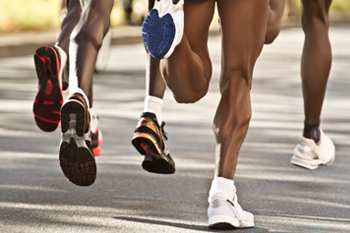
When it comes to running, the right pair of shoes can make all the difference in your performance and overall foot health. With a large number of options available, it is essential to consider several factors before buying running shoes. Prioritize finding a shoe that fits well, offering a snug yet comfortable feel with ample toe room to accommodate potential swelling. Understanding your foot's arch type is essential for selecting appropriate arch support to maintain proper alignment and prevent injuries. Consider the level of cushioning that suits your running style and preferences, whether you prefer a softer or firmer feel. For runners who have overpronation or supination problems, stability features like medial support or a wider base can help correct gait issues and reduce the risk of injury. Opt for shoes with flexibility and breathability to allow for natural foot movement and keep your feet cool and dry during long runs. Since every runner is unique, consulting a chiropodist for personalized advice is suggested to ensure you choose the most suitable footwear to support your running plans.
The right running shoes can sometimes be difficult to find. With so many options on the market, it’s important to know the unique needs of your feet prior to buying running shoes. If you require assistance, please consult with Emily Yu, B.Sc from Uptown Foot Care Clinic. Our specialist can help you maintain the health of your lower limbs and your mobility.
When looking for running shoes, take into consideration:
The type of running you will be doing
The terrain you plan to run on
Your gait or running pattern
Your arch type
Other unique foot needs
A chiropodist can help by examining your feet and your gait to determine what types of shoes may be best for you. Some runners may require motion control shoes, which prevent your foot from rolling too far inward while you run. Others may need stability shoes, which offer more balance, cushioning, and support. When shopping for shoes, make sure that they are the right size, fit comfortably, and are made of breathable materials.
If you have any questions, please feel free to contact our office located in . We offer the newest diagnostic and treatment technologies for all your foot care needs.
How to Manage Foot Blisters After Hiking
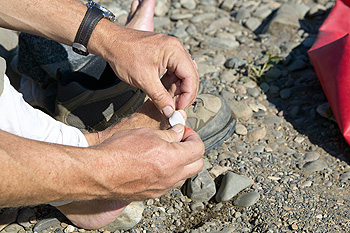
Foot blisters can be a painful consequence of an adventurous hike, disrupting the joy of exploring nature. However, with proper treatment, they can be managed effectively, allowing hikers to get back on their feet in no time. Begin by cleaning the blister and the surrounding area with mild soap and water to prevent infection. Avoid draining or removing the skin covering the blister to protect the wound from bacteria. Apply an antibiotic ointment and cover the blister with a sterile gauze pad to promote healing and prevent further friction. It is important to keep the affected area clean and dry to prevent additional irritation. Additionally, wearing well-fitted, moisture-wicking socks and properly breaking in hiking boots can help prevent blisters in the future. With patience and care, foot blisters can be effectively managed, allowing hikers to hit the trails with confidence once again. If you develop blisters after hiking, it is suggested that you seek the guidance of a chiropodist who can successfully treat them.
Blisters can usually be treated at home, however, if you have recurring blisters or experience significant discomfort or pain, please consult with Emily Yu, B.Sc from Uptown Foot Care Clinic. Our specialist will assess your condition and provide you with quality foot and ankle treatment.
What Is a Blister?
A blister is a small pocket of fluid in the upper skin layers and is one of the body’s natural responses to injury or pressure. Blisters can also result from burns, fungal or viral skin infections, and the feet are particularly prone due to ill-fitting footwear and friction. Friction on the skin causes the upper layer of skin to separate from the lower layers. The space that this separation creates then becomes filled with a liquid called serum, which protects the lower layers of skin.
Treatment
If you notice a blister on your foot, you can cover it with a soft bandage or dressing to protect it. Popping the blister is discouraged. Doing so exposes the raw skin underneath it to bacteria and also raises the risk of infection. If a blister pops naturally, let it drain before covering it with a bandage. Blisters usually heal on their own or with home treatment, however, if your blister is recurring, very painful, or appears infected, it is recommended that you see a chiropodist for treatment.
Prevention
You can help to prevent blisters by wearing comfortable, well-fitted shoes. Keep your feet dry by wearing moisture-wicking socks and dust your feet with talcum powder if they tend to get sweaty. If you have areas on your feet that are more susceptible to blisters, you might be able to prevent the blister from forming by covering it with a pad.
If you have any questions, please feel free to contact our office located in . We offer the newest diagnostic and treatment technologies for all your foot care needs.
Structural Abnormalities Causing Children’s Foot Problems
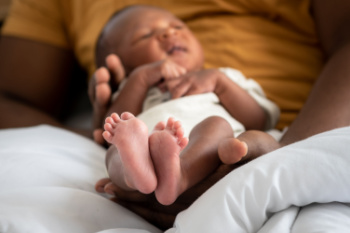
Structural abnormalities such as in-toeing and out-toeing are common in children, often stemming from factors such as genetic predisposition, fetal positioning, or tight muscles and ligaments. These conditions can impact a child's gait and overall mobility, leading to tripping and having difficulty with physical activities. If your child has these rotational issues, it is suggested that you seek assistance from a chiropodist for a proper diagnosis to address these issues effectively. Through a thorough evaluation, the chiropodist can develop a personalized treatment plan, which may involve stretching exercises, orthotics, or footwear modifications to correct foot alignment and improve walking mechanics. Early intervention is key to preventing potential complications and ensuring optimal foot development and function as the child continues to grow. If your child has these foot conditions, it is suggested that you confer with a chiropodist who can guide you toward a specific course of treatment.
If your child is experiencing foot or ankle pain, please consult with Emily Yu, B.Sc from Uptown Foot Care Clinic. Our specialist will assess your condition and provide you with quality foot and ankle treatment.
Common Causes of Foot Pain in Children
While children can experience many of the same foot problems as adults do, some foot problems may be more common during childhood.
Causes of foot pain in children can include:
Deformities that are present from birth, such as flat feet or clubfoot
Sever’s disease, which is an inflammation of the growth plate in the heel bone
Various sports injuries, such as sprains and fractures
Ingrown toenails
Athlete’s foot
Plantar warts
Prevention
It is important to look after the health of children’s feet in order to prevent future problems from arising. Keep your child’s feet clean and dry, trim their toenails regularly, ensure their shoes fit properly, and keep a watchful eye on any symptoms of foot pain, such as limping. If you notice any symptoms or if your child complains of foot pain, a chiropodist can help.
If you have any questions, please feel free to contact our office located in . We offer the newest diagnostic and treatment technologies for all your foot care needs.
Distinctions Between Walking and Running Shoes
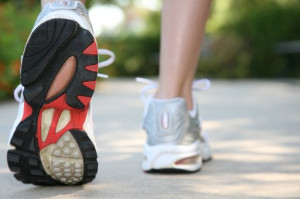
In the realm of footwear, the disparities between walking and running shoes are significant. While both serve the purpose of foot protection and support, their designs cater to distinct biomechanical demands. Walking shoes are crafted to focus on stability and cushioning, providing adequate support for the heel strike and transition to toe-off during a walking gait. Conversely, running shoes prioritize flexibility and shock absorption to accommodate the higher impact forces generated by running strides. These shoes typically feature additional cushioning in the forefoot region and a more pronounced heel-to-toe drop to facilitate a smooth transition. The variations extend to the outsole patterns as well, with running shoes often incorporating deeper treads for enhanced traction on various surfaces. Understanding these differences is vital for selecting the appropriate footwear to optimize comfort and performance during walking or running activities. If you like to walk or run and have questions about what type of shoes to purchase, it is suggested that you contact a chiropodist.
Finding the right shoes can sometimes be a major hassle, especially if you intend to work out in them. There are shoes on the market designed specifically for running and walking, but it can be difficult to differentiate between the two and find the right shoes for you. If you’re having trouble finding the right shoes, please consult with Emily Yu, B.Sc from Uptown Foot Care Clinic. Our specialist can help you maintain the health of your lower limbs and your mobility.
What are the differences between running and walking shoes?
These two types of shoes vary along several parameters.
Cushioning: Runners need more cushioning in the heel and forefoot areas of the shoe, while walkers can get away with less cushioning.
Heel height: Runners need a higher heel to provide them with stability, but the ideal height of the heel for runners varies depending on their running gait. Walkers generally don’t need a built-up heel.
Heel flare: Flared heels can help provide extra stability for runners with certain gaits, while walkers may benefit from a flared heel to control the motion of their foot.
Flexibility: Both runners and walkers need shoes that are flexible.
For more information about the differences between walking and running shoes, and to figure out which shoes may be right for you, please consult with a chiropodist. Feel free to contact our office located in . We offer the newest diagnostic and treatment technologies for all your foot care needs.
Navigating Foot Conditions During Pregnancy
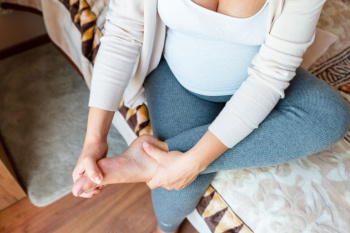
Pregnancy brings forth many changes, not only to the body but also to the feet. As the body undergoes hormonal shifts and experiences weight gain, various foot conditions may arise. Flat feet, or fallen arches, are a common occurrence due to the increased pressure on the feet, leading to a flattening of the arches and potential discomfort. Additionally, pregnant women may experience sensations of heat or burning in their feet, known as burning feet syndrome, attributed to hormonal fluctuations and increased blood flow. Cracked heels, caused by dryness and pressure on the feet, can also be heightened during pregnancy due to hormonal changes and additional weight bearing. While these foot conditions are often temporary and resolve postpartum, managing symptoms through wearing proper footwear, practicing foot care routines, and seeking medical advice when needed can alleviate discomfort and promote foot health during pregnancy. If you are experiencing foot pain during your pregnancy, it is suggested that you visit a chiropodist who can offer you appropriate relief and treatment options.
Pregnancy can affect your feet in many ways, often causing pain or discomfort, as well as reduced mobility. If you are pregnant and experience foot pain, please consult with Emily Yu, B.Sc from Uptown Foot Care Clinic. Our specialist will assess your condition and provide you with quality foot and ankle treatment.
During pregnancy, your belly isn’t the only part of your body swelling. The whole body may experience swelling, especially in the feet and ankles. Since they carry the weight of both your body and the baby’s, caring for your feet during pregnancy is very important.
Common Foot Conditions During Pregnancy
Various foot conditions can develop during the course of a pregnancy, including:
Swelling of the feet and ankles
Fallen arches, leading to acquired flat feet
Plantar fasciitis
Aching, sore feet
Changes in the toenails
Caring for the Feet During Pregnancy
Some things that you can do to help maintain the health of your feet during pregnancy include:
Wearing comfortable shoes
Resting and elevating your feet
Icing sore areas, such as the arch
Keeping your toenails trimmed
Soaking and massaging the feet
If you have any questions, please feel free to contact our office located in . We offer the newest diagnostic and treatment technologies for all your foot care needs.
